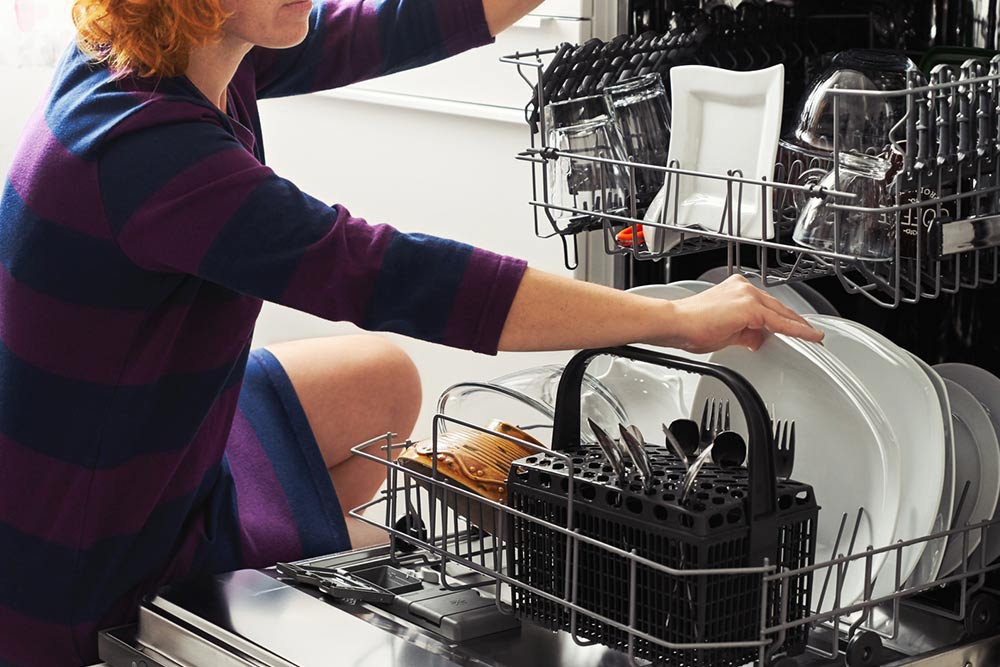8 dishwasher mistakes to avoid

Dishwashers have become an essential home appliance in today’s world, and there is no denying how much we rely on them to make our lives more comfortable. They take away the burden of doing the dishes, reducing stress significantly. However, it is crucial to follow the instructions when using dishwashers. Some people skip reading the manual, making mistakes that must be avoided. Check out the most common dishwashing mistakes and how to avoid them.
Overloading the dishes
Wanting to complete the dishwashing load in one attempt is a common desire since no one wants to repeat the cycle. However, cramming too many dishes at once can result in water and steam being unable to wash each dish adequately. This obstruction could cause the dishes to be insufficiently cleaned.
Arranging dishes incorrectly
Loading the dishwasher can sometimes feel like solving a complex crossword puzzle. Finding the right way to fit all the dishes can be challenging. However, creating a dishwasher loading system can save time and effort. For instance, try loading from back to front instead of from front to back. This will give a better idea of how much space is left and what can be accommodated. It will also make unloading the dishwasher quick and less risky, making one less likely to break dishes accidentally.
Tossing the detergent in
When confronted with an exceptionally dirty load for the dishwasher, most people initially react to adding more detergent. This is especially true after a party or a holiday meal. However, extra detergent is not always the best solution as it does not guarantee cleaner dishes. It can result in more residue being deposited on the dirty dishes or even cause suds to overflow from the machine, leading to potential repairs. It’s better to avoid the temptation to add a bit extra detergent and stick to pre-measured tabs if necessary. Generally, always stay below the maximum capacity line to ensure the dishwasher’s safe and proper use.
Putting in unsafe utensils
It’s important to note that there isn’t an all-in-one dishwasher for every utensil. This means some utensils might require manual washing and drying, which can be tiresome. However, it’s crucial to avoid washing fine china or crystal utensils in the dishwasher, as this can cause severe damage to the machine and the rest of the wash. Some dishwashers have a delicate setting, but it’s still risky. If unsure how to clean delicate items or plastic utensils, always check the label and proceed cautiously. When in doubt, manual washing is always the safer option.
Choosing the wrong rack
When loading the dishwasher, knowing where to place the utensils is essential to ensure a thorough cleaning. One can consult the dishwasher manual for guidance to ensure it is loaded correctly. Additionally, some dishwasher-safe dishes may have instructions noted on them, so one can quickly flip the utensil and check what it says. It’s essential to note that certain items, such as small bowls, mugs, and plastic storage containers, should be placed on the top rack, while more giant bowls, casseroles, and other dishes must be placed on the bottom rack. By following these simple guidelines, one can ensure that the dishes come out spotless every time.
Failing at dishwasher cleaning
Proper handling and maintenance are crucial for the longevity of every appliance, including dishwashers. Regularly clean the filters of the dishwasher to keep it working effectively. Inspect any leftover food scraps, seeds, or nuts that may have been left behind in the dishwasher. Failure to do so may cause problems in the machine. If one finds any debris at the base of the dishwasher, remove it immediately.
Additionally, examine the sprays and steam arms for any accumulated debris. A noticeable odor or soiling in the machine may indicate that maintenance has been skipped. If the dishes come out less clean than usual, it is a sign that maintenance is necessary. If the issue persists, consider contacting the provider or a professional repair personnel for assistance.
Not using it often
Doing the dishes can be a daunting task. However, using it regularly is the key to organizing and keeping the dishwasher running. Even if there is no full load in the kitchen, one must put the utensils in the dishwasher and run a night cycle. If the dishwasher can adjust the load size, use the option to make the most out of the machine. Take time each morning to unload the machine when the coffee is brewing. A system can make the task less grueling and more of a habit.
Unsafe loading
When it comes to loading utensils in the dishwasher, the position of the glasses can be a matter of concern, especially in households with children. Parents must be cautious while allowing their kids to load or unload the dishwasher, as mishaps can happen. It is not recommended to place dining utensils with handles down, as it can increase the risk of accidents. For instance, if knives or forks are loaded with sharp sides facing upwards, they can threaten children who may inadvertently grab them. Therefore, loading the glasses with their handles facing upward for safe and hassle-free dishwashing is advisable.











